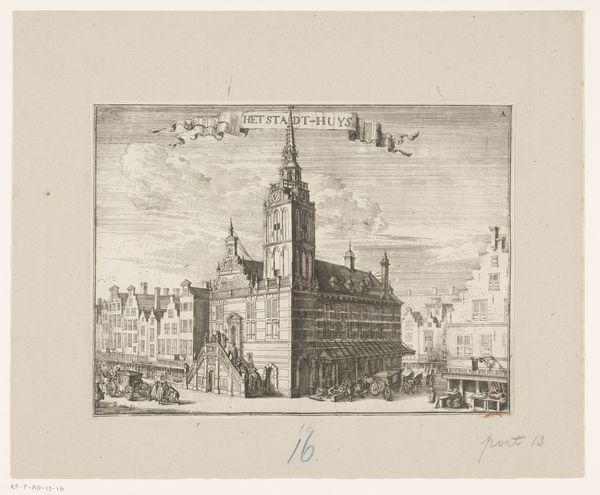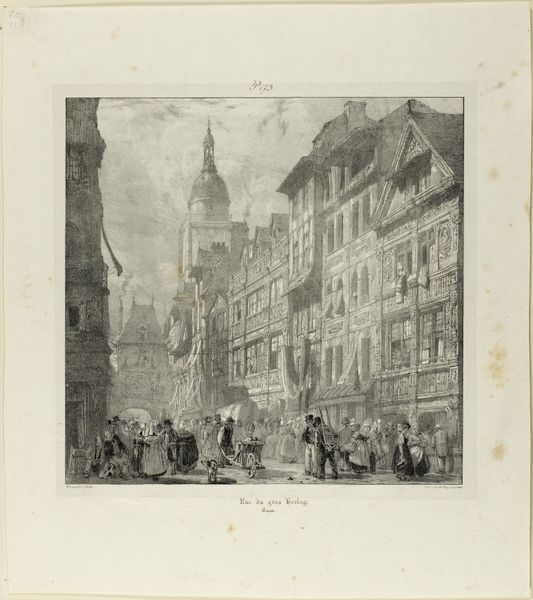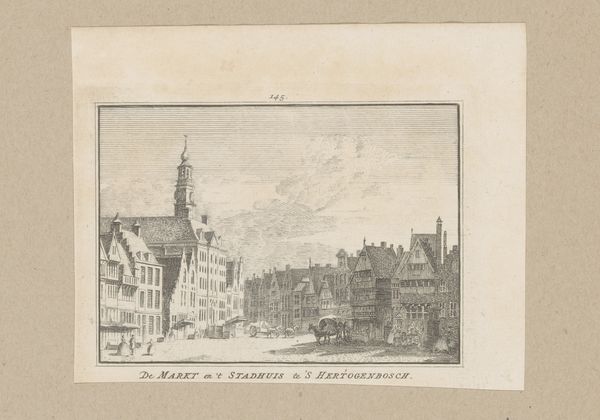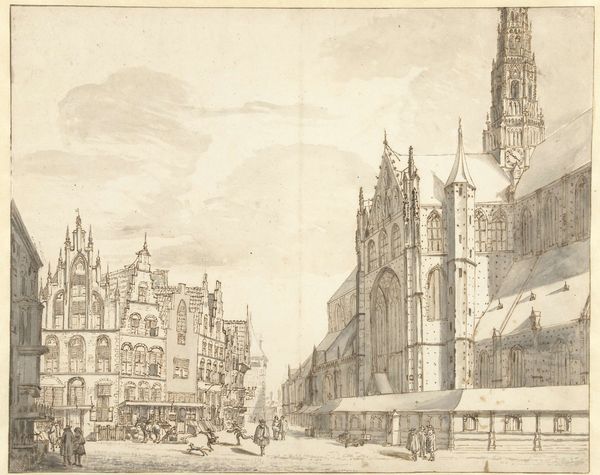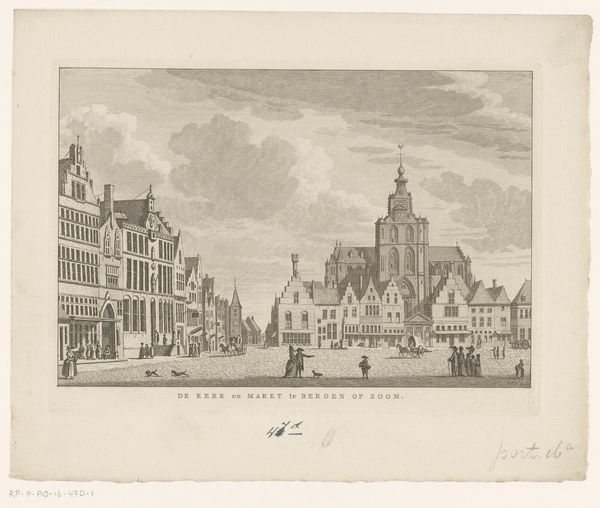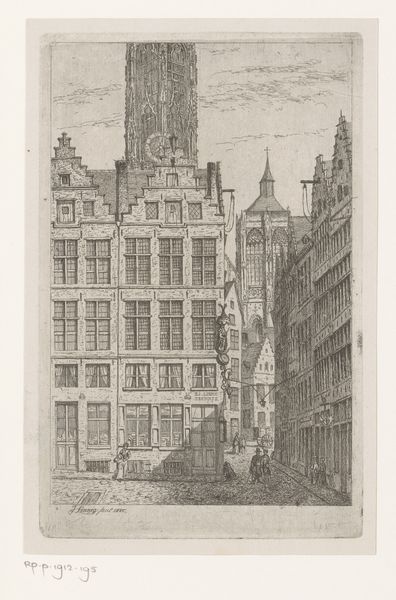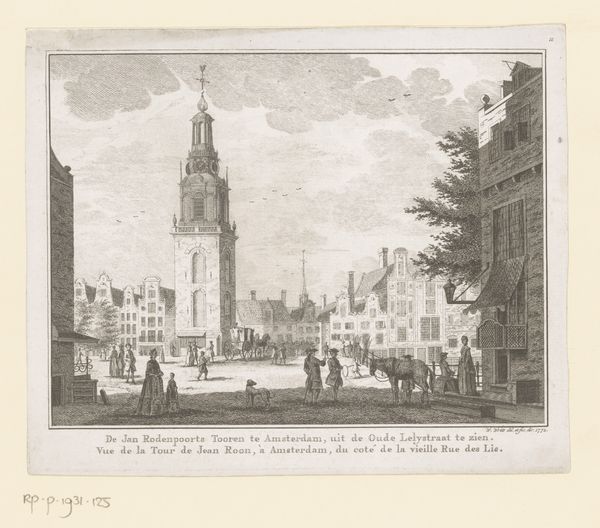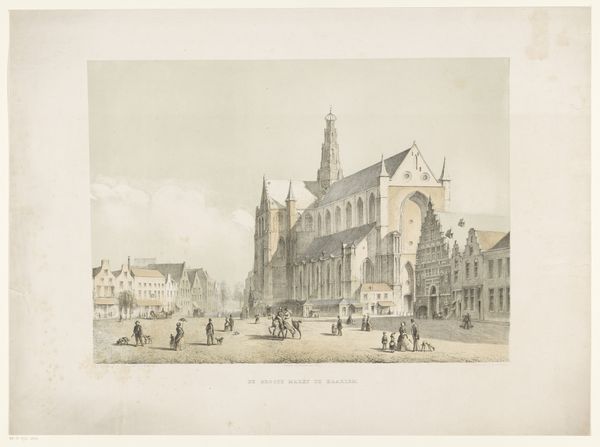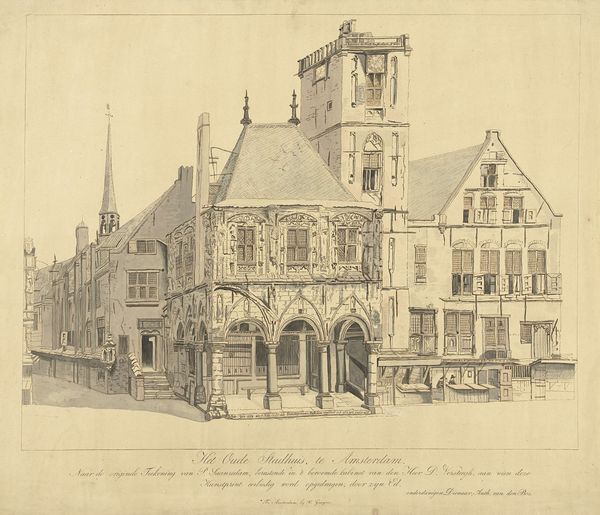
drawing, paper, ink
#
drawing
#
dutch-golden-age
#
paper
#
ink
#
cityscape
#
genre-painting
Dimensions: height 155 mm, width 155 mm
Copyright: Rijks Museum: Open Domain
Curator: This delicate ink drawing is entitled "Stadsgezicht van Leeuwarden met de Nieuwe Toren," a cityscape of Leeuwarden with the New Tower, by Cornelis Pronk, dating to somewhere between 1700 and 1800. Editor: My first impression is that the image, rendered almost exclusively in line, possesses an intriguing dreamlike quality, heightened by the off-white paper. Curator: Yes, that tonal balance gives the buildings and figures an ethereal glow. Let's focus on that tower for a moment. In iconographic terms, towers often symbolize civic pride, and aspirations towards the divine. It’s quite literally a structure striving for the heavens, positioned amidst earthly activity. Editor: The composition definitely directs our gaze vertically to that tower. I would suggest Pronk is working within a highly structured spatial arrangement; the tower serves as a visual anchor amidst the apparent chaos of the street scene. Note how he establishes depth via linear perspective and the rendering of overlapping architectural planes. Curator: I agree; this tower's looming presence would have profoundly shaped the lives of those in the city below. Imagine the social rituals occurring in its shadow, the declarations of civic authority, and the silent gaze it casts over centuries of change. One cannot overlook the symbolism of enduring architectural heritage juxtaposed against fleeting human narratives. Editor: You can almost sense the geometric clarity attempting to contain the unpredictable vitality of the people. Consider the relationship between stasis and dynamism, the tower immutable, while the human forms animate the lower third. What narrative tensions do you detect there? Curator: An acute observation! This tension speaks to the temporality of human existence versus the perceived permanence of constructed spaces. These street-level transactions of buying and selling also represent an ever-shifting social and economic landscape. Perhaps, these figures are visual cues, prompts for viewers to ponder the transitory nature of daily life in relation to steadfast communal ideals embodied by the architecture. Editor: The strategic employment of line as structure suggests a compelling dichotomy between tangible reality and imagined possibilities, as this image serves as an archive for decoding layers of social aspirations embedded in physical space. Curator: Agreed. I see Pronk’s drawing, in essence, as a window into both a literal place and a state of mind—a nexus of urban space and ideological form.
Comments
No comments
Be the first to comment and join the conversation on the ultimate creative platform.
